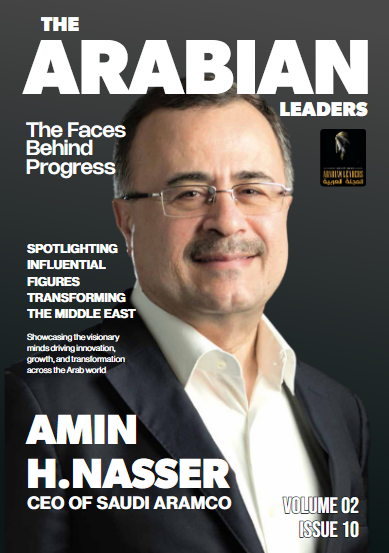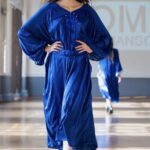In the fast-moving, highly emotional world of fashion, brands are no longer just selling clothes—they are selling experiences, stories, emotions, and identities. With consumers expecting more personalization, interactivity, and innovation, traditional marketing methods alone can no longer keep pace.
Fashion marketing has entered an era shaped by the power of artificial intelligence (AI), virtual reality (VR), augmented reality (AR), and immersive technologies. These advanced tools are transforming the way brands connect with their audiences, build loyalty, and drive sales.
And the best part? These innovations are no longer exclusive to billion-dollar luxury houses. Today, small and medium-sized fashion brands can also tap into these technologies to create cutting-edge customer experiences, stand out from the crowd, and thrive in an increasingly competitive landscape.
Why Old Marketing Methods Are Falling Short
For decades, fashion marketing relied on polished lookbooks, glossy magazine ads, runway shows, and high-end storefronts. With the rise of e-commerce, brands expanded their digital footprints, setting up online shops and social media accounts.
But modern consumers—especially Millennials and Gen Z shoppers—have grown up immersed in technology. They are used to highly interactive apps, real-time responses, instant gratification, and social media ecosystems where trends shift overnight.
Static product images and generic online catalogs no longer satisfy these audiences. What they want is:
- The ability to see and interact with products in real time—not just a photo but a dynamic, visual experience.
- Personalized recommendations tailored to their tastes, body types, and lifestyles—not one-size-fits-all promotions.
- A sense of connection and storytelling that makes them feel part of the brand’s journey—not just a faceless transaction.
Fashion brands that want to stay competitive need to embrace the technological tools that meet these evolving demands.
Transforming Fashion Marketing with New Technologies
Let’s dive into some of the most impactful modern marketing strategies available today using AI, VR, AR, and immersive technologies—and how they help brands not just survive but flourish.
1. AI-Powered Virtual Sales Assistants: Your Digital Stylists
AI-driven virtual sales assistants are the next generation of online customer support, offering far more than simple chatbot answers. These intelligent systems can act as digital stylists who:
- Guide customers through collections, suggesting outfits based on past preferences and browsing behavior.
- Provide instant, detailed responses to questions about sizing, fabric, fit, and availability.
- Offer curated suggestions for entire looks, helping shoppers style complete outfits instead of single items.
- Make shopping feel interactive, personal, and high-touch—even without human involvement.
For fashion brands, this translates into higher conversion rates, longer customer engagement, and stronger brand loyalty.
2. Virtual Reality Showrooms: Boutique Shopping Without Borders
Imagine giving your customers the thrill of walking through an upscale boutique or an exclusive fashion event—without them ever leaving their homes.
With VR showrooms, brands can build fully immersive, interactive environments where shoppers can:
- Explore entire collections by “walking” through a digital store, browsing racks, and examining items up close.
- Click on products for pop-up videos, designer interviews, or fabric details.
- Interact with virtual fashion consultants or stylists, making the experience feel alive and personalized.
These virtual spaces can be built using platforms like Unreal Engine or Unity, allowing even small brands to offer luxury-level digital experiences. Content from these VR experiences can also be repurposed for social media, creating buzz and viral engagement.
3. Augmented Reality (AR) and XR Tools: The New Dressing Room
While VR creates fully virtual environments, AR and XR (extended reality) overlay digital elements onto the real world. For fashion brands, this unlocks incredible opportunities to:
- Let shoppers try on clothing virtually using their phone cameras or AR mirrors. They can see how a jacket fits or how a dress flows without stepping into a fitting room.
- Provide 3D visualizations of fabrics so customers can appreciate the texture, movement, and details of a garment before purchasing.
- Use QR codes or AR triggers on in-store signage or product tags to unlock hidden styling tips, behind-the-scenes videos, or exclusive discounts delivered by an AI expert.
This blend of digital and physical engagement keeps shoppers invested longer, increases purchasing confidence, and reduces product returns.
4. Immersive Storytelling: Bringing Brands to Life
In today’s crowded fashion market, storytelling is everything. Brands that connect emotionally with their customers foster deeper loyalty and stand apart from competitors.
Using AI avatars, 3D animations, and immersive media, fashion brands can:
- Develop virtual brand ambassadors—AI characters or influencers—who represent the brand’s values, personality, and voice across social platforms.
- Host digital runway shows, blending fashion, art, and music into live-streamed spectacles that reach global audiences.
- Create interactive campaigns where customers participate in product launches, co-design initiatives, or virtual events.
This kind of immersive storytelling transforms customers into community members, turning passive shoppers into active brand advocates.
5. Hyper-Personalized Shopping Experiences: Data-Driven Delight
At the core of many of these innovations is one key ingredient: data. AI systems can process and analyze massive amounts of customer data to help brands:
- Predict what customers want, even before they know it themselves.
- Generate personalized product recommendations that match individual tastes, increasing the chances of conversion.
- Send targeted marketing emails, curated lookbooks, or exclusive offers that resonate with each customer’s unique profile.
- Train customer support chatbots on fashion-specific knowledge, delivering fast, relevant, and accurate responses.
By using data intelligently, brands move from broad, generalized marketing to deeply personalized customer journeys that feel effortless and delightful.
The Big Benefits for Small and Medium Fashion Brands
While these technologies may sound futuristic, they’re increasingly accessible—and they offer tremendous advantages, particularly for small and medium-sized fashion brands.
Here’s what brands can gain:
- Enhanced customer support without the need for large teams, thanks to scalable AI tools.
- More precise, targeted marketing using AI insights and predictive analytics.
- Higher sales conversion rates through immersive, engaging buying experiences.
- Expanded reach by connecting with customers worldwide through digital platforms, breaking past physical limitations.
- A stronger, more distinct brand identity by weaving storytelling and technology into every customer touchpoint.
Shaping the Future: Why Immersive, Intelligent Marketing Wins
Modern consumers are no longer satisfied with passive shopping. They want to be entertained, engaged, and understood. They want brands that care about delivering meaningful, enjoyable, and inspiring experiences—whether online or in-store.
By integrating AI-powered virtual assistants, VR showrooms, AR try-on features, immersive storytelling, and hyper-personalized recommendations, fashion brands signal that they understand and value their customers. They show that they are willing to innovate, adapt, and lead.
The future of fashion marketing is not just about pushing products—it’s about creating immersive journeys, building emotional connections, and making every customer feel like part of something larger.
Final Thought: You Don’t Have to Be a Giant to Compete
It’s easy to assume that these tools are only within reach for luxury brands or global corporations. But the truth is, small and mid-sized fashion brands now have unprecedented access to affordable, scalable technology solutions.
By adopting these innovations, you can:
- Level the playing field against larger competitors.
- Build loyal communities around your brand.
- Craft unforgettable experiences that keep customers coming back.
- Position yourself as a forward-thinking leader in a fast-changing industry.
Whether you’re a boutique label, an emerging designer, or an established brand looking to evolve, the time to embrace AI, VR, AR, and immersive tech is now. These tools are no longer optional—they are the new foundation of successful fashion marketing.








